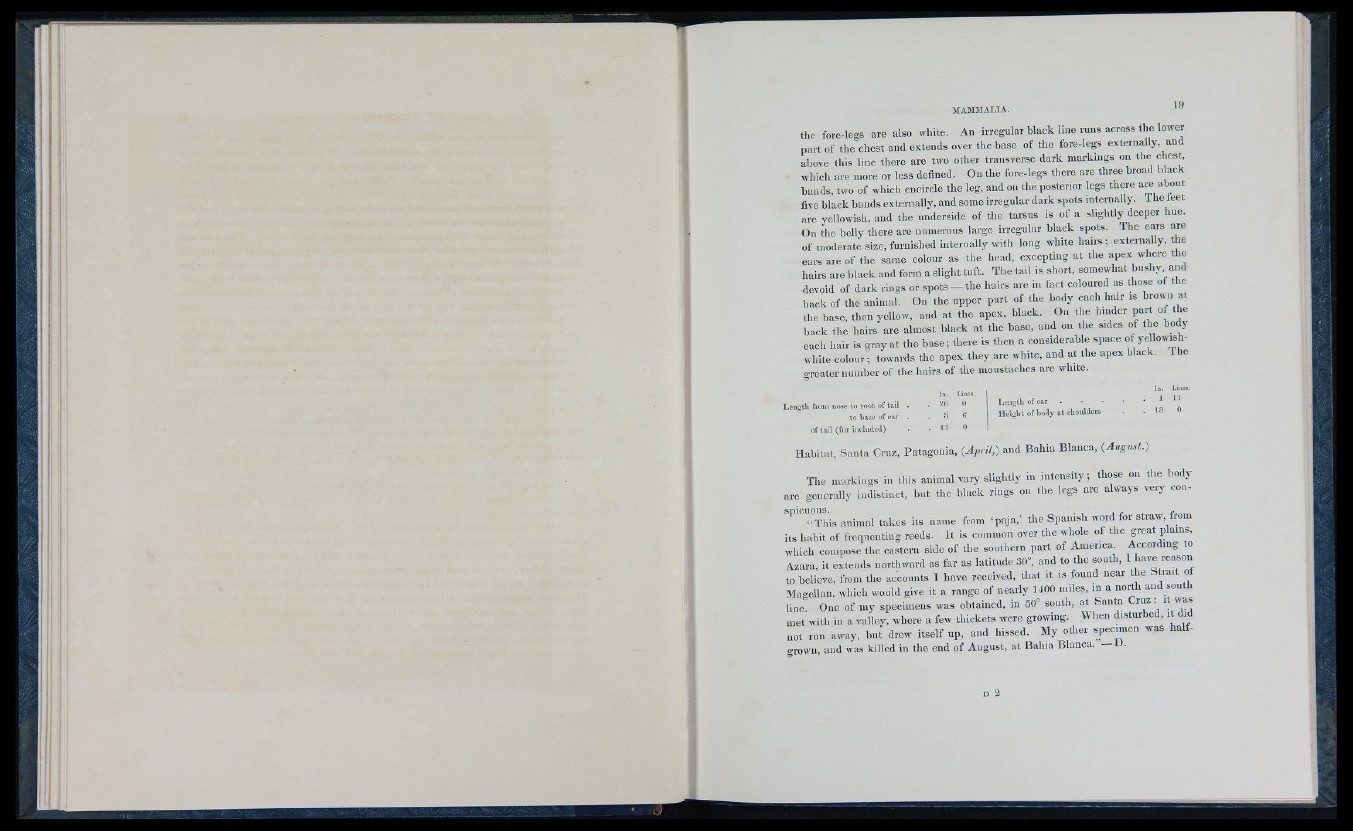
the fore-legs are also white. An irregular black line runs across the lower
part of the chest and extends over the base of the fore-iegs externally, and
above this line there are two other transverse dark markings on the chest,
which are more or less defined. On the fore-legs there are three broad b ack
bands, two of which encircle the leg, and on the posterior legs there are about
five black bands externally, and some irregular dark spots internally. The ieet
are yellowish, and the underside of the tarsus is of a slightly deeper hue.
On the belly there are numerous large irregular black spots. The ears are
of moderate size, furnished internally with long white hairs; externally, t e
ears are of tlie same colour as the head, excepting at the apex where the
hairs are black and form a slight tuft. The tail is short, somewhat bushy and
devoid of dark rings or spots — the hairs are in fact coloured as diose of the
hack of the animal. On the upper part of the body each hair is brown at
the base, then yellow, and at the apex, black. On the hmder part o the
hack the hairs are almost black at the base, and on the sides of the body
each hair is gray at the base; there is then a considerable space
white colour; towards the apex they ate white, and at the apex black. The
greater number of the hairs of the moustaches are white.
L enath from to root of tail
to base of ear
of tall (fur included)
In. Lines.
26 0
3 6
11 0
Length of car .
H eight of body at shoulders
Habitat, Santa Cruz, Patagonia, {April,) and Bahia Blanca, {August.)
The markings in this a n im a l v a r y slightly in intensity; those on the body
are generally indistinct, hut the black rings on the legs are always veiy con-
' ‘’''^ T h is animal takes its name from ‘paja,’ t h e S p a n i s h word for straw, from
its habit of frequenting reeds. It is common over the whole of the great plains,
which compose the eastern side of the southern part of America. According to
Azara, it extends northward as far as latitude 30°, and to the south, I have reason
to believe, from the accounts I have received, that it is found near the Strait of
Magellan, which would give it a range of nearly 1400 miles, in a north and south
line One of my specimens was obtained, in 50° south, at Santa luz . i was
met with in a valley, where a few thickets were growing. Wlien disturbed, it did
not run away, hut drew itself up, and hissed. My other specnnen was halfgrown,
and was killed in the end of August, at Bahia Blanca. —U.
D 2